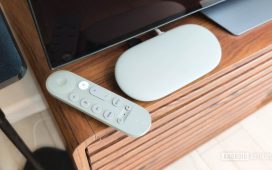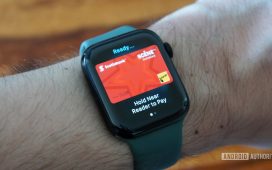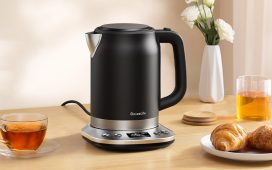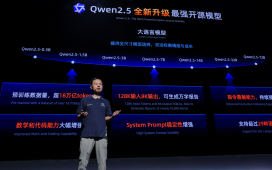Both Apple and Google released compact flagship smartphones recently. Apple’s arrived earlier this month, while Google’s landed in mid-August. We’re here to compare those two phones, the Apple iPhone 16 Pro vs Google Pixel 9 Pro. Not only are both of them compact phones, but they actually have the same display sizes. To make things even more similar, they also have flat sides, and so on. There are a lot of differences between them, though, so there’s plenty to talk about here.
As per usual, we will first list their specifications and will take it from there. Following that, we’ll be comparing their designs, displays, performance, battery life, cameras, and audio output. These two phones are just as powerful as their larger siblings. Neither company decided to cut corners with the smaller flagships this year, which is always nice to see. So… let’s get to it, shall we?
Specs
Apple iPhone 16 Pro vs Google Pixel 9 Pro, respectively
– Screen size:
6.3-inch LTPO Super Retina XDR OLED ( flat, 120Hz, HDR, 2,000 nits max brightness)
6.3-inch QHD+ OLED (120Hz, HDR, 3,000 nits)
– Display resolution:
2622 x 1206
2856 x 1280
– SoC:
Apple A18 Pro (3nm)
Google Tensor G4
– RAM:
8GB
16GB (LPDDR5X)
– Storage:
128GB/256GB/512GB/1TB (NVMe)
128GB/256GB/512GB/1TB (UFS 3.1)
– Rear cameras:
48MP (wide, f/1.8 aperture, 1/1.28-inch sensor, 1.22um pixel size, sensor-shift OIS), 48MP (ultrawide, f/2.2 aperture, 0.7um pixel size, PDAF), 12MP (periscope telephoto, f/2.8 aperture, 1/3.06-inch sensor, 1.12um pixel size, 3D sensor-shift OIS, 5x optical zoom)
50MP (wide, f/1.7 aperture, 1.2um pixel size, OIS, EIS), 48MP (ultrawide, f/1.7 aperture, 123-degree FoV), 48MP (periscope telephoto, f/2.8 aperture, OIS, EIS, 5x optical zoom)
– Front cameras:
12MP (f/1.9 aperture, PDAF, 1/3.6-inch sensor size, OIS)
42MP (f/2.2 aperture)
– Battery:
3,582mAh
4,700mAh
– Charging:
38W wired, 25W MagSafe wireless, 15W Qi2 wireless, 7.5W Qi wireless, 5W reverse wired
27W wired, 21W wireless (Pixel Stand), 12W Qi wireless, 5W reverse wireless (no charger)
– Dimensions:
149.6 x 71.5 x 8.3 mm
152.8 x 72 x 8.5 mm
– Weight:
199 grams
– Connectivity:
5G, LTE, NFC, Wi-Fi, USB Type-C, Bluetooth 5.3
– Security:
Face ID (3D facial scanning)
Ultrasonic in-display fingerprint scanner
– OS:
iOS 18
Android 14
– Price:
$999+
$999+
– Buy:
Apple iPhone 16 Pro
Google Pixel 9 Pro (Best Buy, Google Store)
Apple iPhone 16 Pro vs Google Pixel 9 Pro: Design
Both of these phones are made out of metal and glass. The thing is, the iPhone 16 Pro has a frame made out of titanium, with some aluminum in the mix. The Pixel 9 Pro’s is made out of aluminum. Titanium is the stronger material, but aluminum is better when it comes to heat dissipation. Both phones have flat sides all around, though they do curve a bit towards the very edges, for comfort’s sake. You’ll also notice rounded corners on both smartphones.
The front and back sides on both devices are flat too. The iPhone 16 Pro includes a pill-shaped cutout at the top of the display, the so-called ‘Dynamic Island’. Google’s handset has a display camera hole instead. The bezels are very thin on both of these devices, and they’re also uniform on top of that. On the iPhone 16 Pro, you’ll find the power/lock key and the ‘Camera Control’ buttons on the right-hand side. On the left, the volume rocker buttons are located, and the ‘Action Button’.
The Pixel 9 Pro includes all of its physical keys on the right-hand side. The power/lock button sits there, and below it you’ll find the volume up and down buttons. Apple’s handset has a camera island in the top-left corner of its back, with three cameras in there. Apple’s well-known rear camera design is included here. The Pixel 9 Pro has a pill-shaped camera island at the top, which is centered. That design makes the Pixel 9 Pro sit nicely on the table, without wobbling, unlike the iPhone 16 Pro.
Apple’s handset is a couple of millimeters shorter than the Pixel 9 Pro. It’s also ever so slightly narrower and thinner, but the difference is less than a millimeter. The two smartphones have the exact same weight, they weigh 199 grams. They’re both also IP68 certified for water and dust resistance.
Apple iPhone 16 Pro vs Google Pixel 9 Pro: Display
The iPhone 16 Pro features a 6.3-inch 2622 x 1206 LTPO Super Retina XDR OLED display. That panel is flat, and it offers an adaptive refresh rate of up to 120Hz. HDR content is supported here, and the same goes for Dolby Vision. The peak brightness of this panel is 2,000 nits. The screen-to-body ratio is at around 90%, while the display aspect ratio is 19.5:9. This display is protected by the Ceramic Shield glass.
![]()
Google’s handset, on the other hand, features a 6.3-inch 2856 x 1280 LTPO OLED display. This panel also offers an adaptive refresh rate of up to 120Hz. It supports HDR10+ content, and the peak brightness here is 3,000 nits. The screen-to-body ratio is at around 87%, while the display aspect ratio sits at 20:9. The Gorilla Glass Victus 2 from Corning is included on top of the display here.
Both of these displays are great. They’re bright, vivid, and more than sharp enough. The touch response is good on both panels, and the viewing angles are great. The blacks are also quite deep, as you’d expect out of OLED displays. Neither display offers high-frequency PWM dimming, though, if that’s something you care about. They both do get bright enough for outdoor use but are not the brightest around.
Apple iPhone 16 Pro vs Google Pixel 9 Pro: Performance
The Apple A18 Pro SoC fuels the iPhone 16 Pro. That is Apple’s brand-new flagship processor. It’s a 3nm chip, in case you were wondering. Apple paired that up with 8GB of RAM and NVMe flash storage. The Pixel 9 Pro is fueled by the Google Tensor G4 processor. That is Google’s new 4nm chip. That processor is paired with 16GB of LPDDR5X RAM and UFS 3.1 flash storage. Neither phone offers expandable storage, by the way.
Apple’s chip is more powerful than Google’s, quite a bit more powerful. Google’s processor is adapted for Pixel phones, though, and it’s made with AI tasks in mind. In regular, day-to-day use, both of these smartphones are outstanding. They do everything you need them to without skipping a beat. Browsing, messaging, emailing, image editing, video processing, basically anything you can think of.
What about gaming? Well, the iPhone 16 Pro is the more powerful smartphone here, both in terms of the CPU and the GPU. It can easily run any game you’ll find on the App Store, even the most demanding ones. The Pixel 9 Pro does not have that much CPU and GPU prowess, but it can still run pretty much every game. Even the most demanding ones are playable, but you may not want to play them at the very highest details, as you’ll notice some limitations. Both smartphones do get quite warm during gaming, but not too warm.
Apple iPhone 16 Pro vs Google Pixel 9 Pro: Battery
The iPhone 16 Pro features a 3,582mAh battery. That is not something Apple confirmed, but something that had to be checked once the phones became available. The Pixel 9 Pro, on the other hand, has a 4,700mAh battery on the inside. Android phones usually have larger batteries, so that’s perfectly normal. The thing is, both of these smartphones do offer really, really good battery life, so that’s not something you need to worry about.
At this point in time, we’re still working on our iPhone 16 Pro review, but have been using the phone for a while, and do know what to expect in terms of battery life. Both of these devices can get you through the day, even if you’re using them quite a bit. Getting to over 7 hours of screen-on-time is possible on both smartphones, depending on your usage. Do note that we didn’t really play games on the day we reached such numbers. Your mileage may, of course, vary, as there are many factors involved.
The iPhone 16 Pro supports 38W wired charging, along with 25W MagSafe wireless, 15W Qi2 wireless, and 7.5W Qi wireless charging. On top of that, 5W reverse wired charging is also supported. The Pixel 9 Pro, on the other hand, supports 27W wired, 21W wireless with Pixel Stand, 12W Qi wireless, and 5W reverse wireless charging. Neither of these two phones includes a charger in the retail box, only the charging cable.
Apple iPhone 16 Pro vs Google Pixel 9 Pro: Cameras
You’ll find three cameras on the back of both of these smartphones. A 48-megapixel main camera (1/1.28-inch sensor) sits on the back of the iPhone 16 Pro. It’s backed by a 48-megapixel ultrawide camera, and a 12-megapixel periscope telephoto camera (1/3.06-inch sensor, 5x optical zoom). The Pixel 9 Pro includes a 50-megapixel main camera (1/1.31-inch sensor), a 48-megapixel ultrawide unit (1/2.55-inch sensor, 123-degree FoV), and a 48-megapixel periscope telephoto camera (5x optical zoom).
![]()
Both of these smartphones are very capable in the camera department. The thing is, they do provide considerably different results. The iPhone 16 Pro prefers to offer images that have warmer color temperatures, images that are yellowish. The Pixel 9 Pro does the exact opposite, it prefers cooler tones, so the images do pull more towards the blue side of things. That’s a jarring difference that you’ll notice in many photos compared side-by-side. Google’s handset also loves to offer contrasty photos, while the iPhone 16 Pro tends to brighten up the shadows even during the day.
Both smartphones do a great job of keeping the photos vivid and sharp, though. Their secondary cameras do a good job of keeping the same color profile as their main cameras. We did prefer Google’s telephoto camera, though it was a close call. Both ultrawide cameras did a fantastic job. Both smartphones also do great when it comes to macro photography, though the iPhone 16 Pro left more of a positive experience there. The same goes for video recording.
Audio
You will find a set of stereo speakers on both of these phones. Those speakers are more than loud enough on both phones, and they do offer audio output that is good in terms of quality too… well, for smartphones.
There is no audio jack on either one of these two phones. You can, however, take advantage of the Type-C port that sits on the bottom of both smartphones. If you prefer wireless connectivity instead, Bluetooth 5.3 is supported on both devices.








